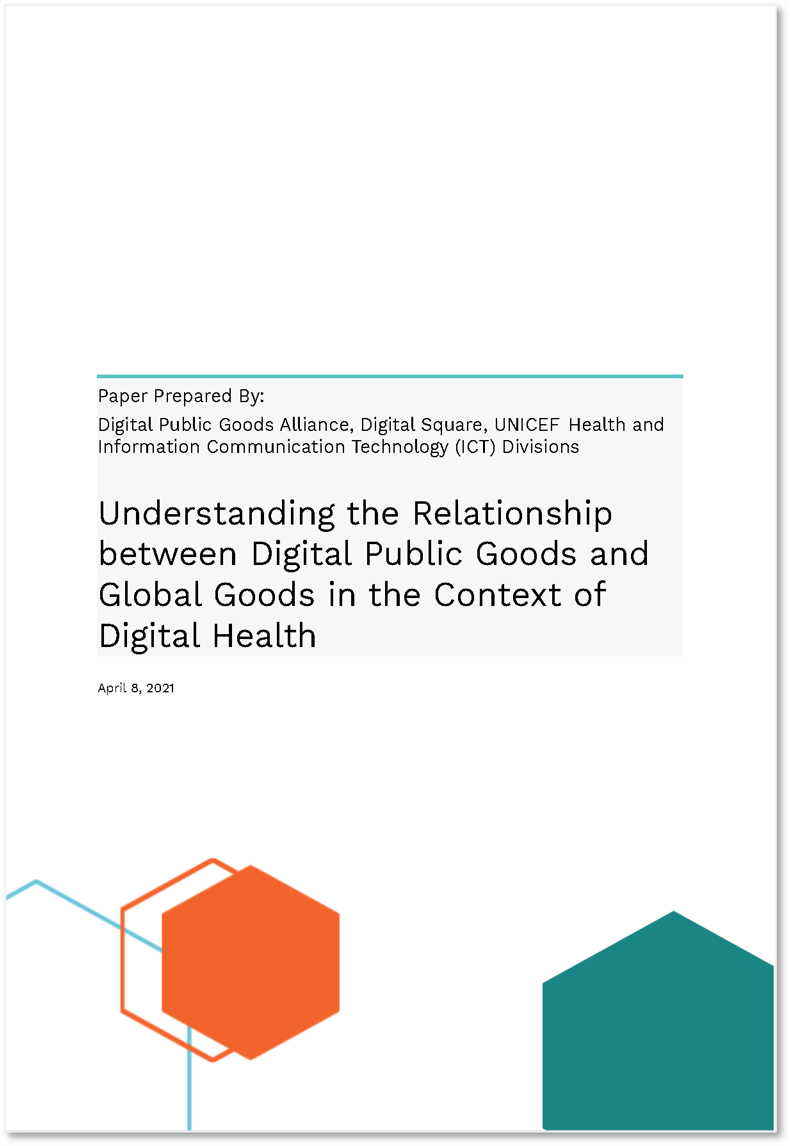What it means to be a global good
The term “global goods” or “public goods” can mean different things in different contexts—so as more organizations align around the use of global goods, it’s important to align around how they are defined.
Over the last year, Digital Square has worked with the Digital Public Goods Alliance (DPGA) and the WHO Digital Clearinghouse to clarify how each group uses these terms, how they overlap, and how they are different. And while Digital Square focuses on global goods related to the health sector, the DPGA considers digital public goods across the Sustainable Development Goals (DSGs)—including topics like climate change and education.
Defining “global goods”
The goal of aligning around a common definition is to provide country governments, donors, and digital tool implementers with a clear understanding of how digital public goods have been evaluated and by which organization. This reduces the complexity of the language we use in digital health and makes it easier to understand and evaluate digital health tools.
In April, with Digital Square’s support, the DPGA and UNICEF Health and Information Communications Technology (ICT) divisions released a white paper that clarifies the definitions for digital public goods and global goods.
The United Nations Secretary-General defines digital public goods (DPGs) as open source software, open data, open AI models, open standards, and open content that adhere to privacy and other applicable laws and best practices, do no harm, and help attain the SDGs. DPGs are added to the DPG Registry when they meet a nine-indicator open standard, focusing on ownership, documentation, data and privacy requirements, etc. The DPGs Standard does not assess scale, funding sources, country deployments, or other indicators of a “mature” global good.
Global goods, defined in the health context by both Digital Square and USAID, refer to a tool being Free and Open Source Software (FOSS), reusable, and adaptable. Digital Square uses a maturity model to assess the scale and scope of global goods, and the USAID Vision for Action in Digital Health notes that global goods should meet the needs for “various geographic or thematic contexts.”
As an additional step for COVID-19 response, the DPGA will be releasing a technical assessment report on DPGs for health in the coming weeks, with a focus on a cohort of digital health global goods that are relevant for immunization delivery management systems. The DPGA is also looking to expand this report to supply chain use cases in future iterations. Digital Square participates in the DPGA health community of practice that has contributed to this report.
Defining “mature” global goods
Digital Square created the Global Good Maturity Model to give governments, donors, and other stakeholders a way to assess digital tools in three general areas: global utility, community, and software. Digital Square-approved global goods conduct self-assessments to track areas where they have grown or strengthened their software features and community.
“The Global Good Maturity Model has created a strong foundation for common language within and across different global goods.”
This maturity model has not only been used to assess Digital Square-approved global goods, but is also used by partners including USAID. The DPGA refers to this maturity model in their classifications of mature vs. less-mature DPGs.
"The Global Good Maturity Model has created a strong foundation for common language within and across different global goods," said Carl Leitner, Digital Square's technical director. "We have used it to document the growth of global goods over time and as a point-in-time assessment of the maturity of a specific tool to help guide our investments. It's wonderful to see this being leveraged under the DPGA initiative."
Digital Square continues to adapt the maturity model to better capture the maturity of approved global goods and will be revising the self-assessments later this summer.
Find out more and get engaged:
Find the slides from the 2021 Global Digital Development Forum session: Navigating how to choose and use from different resources which track global goods


